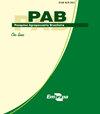巴西高粱杂交种淡季多环境评价
IF 0.7
4区 农林科学
Q3 AGRICULTURE, MULTIDISCIPLINARY
引用次数: 2
摘要
摘要/ Abstract摘要:本研究旨在通过混合建模,在6年的时间里,在20种环境中同时筛选出适应性强、产量稳定的预商品化高粱杂交种。评价植株材料为57个商品高粱杂交种。在所有实验中,杂化体都以三重晶格设计排列;一些实验使用6x6的晶格,另一些则使用5x5的晶格。利用基因型值(HMRPGV)相对性能的调和平均值预测得到了适应性和稳定性参数。结果表明,该混合模型可用于分析籽型高粱基因型与环境(GxE)相互作用及基因型适应性和稳定性研究。考虑到所有环境,突出的混合动力车是1G282、A9904、50A50、A9902和XB6022。A9904杂交种在有利的环境中表现突出,产量高于平均水平。每组环境下的5个最佳杂交种中只有1G282,在产量性能、适应性和稳定性方面均为最佳杂交种。基于基因型均值预测的基因型值可用于具有相同GxE相互作用模式的环境,因为它们不存在GxE相互作用。本文章由计算机程序翻译,如有差异,请以英文原文为准。
Multi-environmental evaluation of sorghum hybrids during off-season in Brazil
Abstract The objective of this work was to simultaneously select pre-commercial grain sorghum hybrids with high adaptability and yield stability, through mixed modeling, in 20 environments, during six years. The evaluated plant material consisted of 57 commercial grain sorghum hybrids. In all experiments, hybrids were arranged in a triple lattice design; some experiments used a 6x6 lattice, and others, a 5x5 lattice. Adaptability and stability parameters were obtained based on the prediction by harmonic mean of the relative performance of genotypic values (HMRPGV). The mixed models proved to be adequate to analyze the genotype x environment (GxE) interaction and the genotypic adaptability and stability studies on grain sorghum. The hybrids that stand out, considering all environments are 1G282, A9904, 50A50, A9902, and XB6022. The A9904 hybrid stands out in favorable environments, with a grain yield above average. Only 1G282 is among the five best hybrids for each group of environments, and it is the best grain sorghum hybrid for yield performance, adaptability, and stability. The predicted genotypic values based on genotypic means can be used in the environments with the same GxE interaction pattern because they are free of the GxE interaction.
求助全文
通过发布文献求助,成功后即可免费获取论文全文。
去求助
来源期刊

Pesquisa Agropecuaria Brasileira
农林科学-农业综合
CiteScore
1.20
自引率
0.00%
发文量
45
审稿时长
9-18 weeks
期刊介绍:
Pesquisa Agropecuária Brasileira – PAB – is issued monthly by Empresa Brasileira de Pesquisa Agropecuária – EMBRAPA, affiliated to Ministry of Agriculture, Livestock and Food Supply. PAB publishes original scientific-technological articles on Plant Physiology, Plant Pathology, Crop Science, Genetics, Soil Science, Food Technology and Animal Science.
Its abbreviated title is Pesq. agropec. bras., and it should be used in bibliographies, footnotes, references and bibliographic strips.
 求助内容:
求助内容: 应助结果提醒方式:
应助结果提醒方式:


